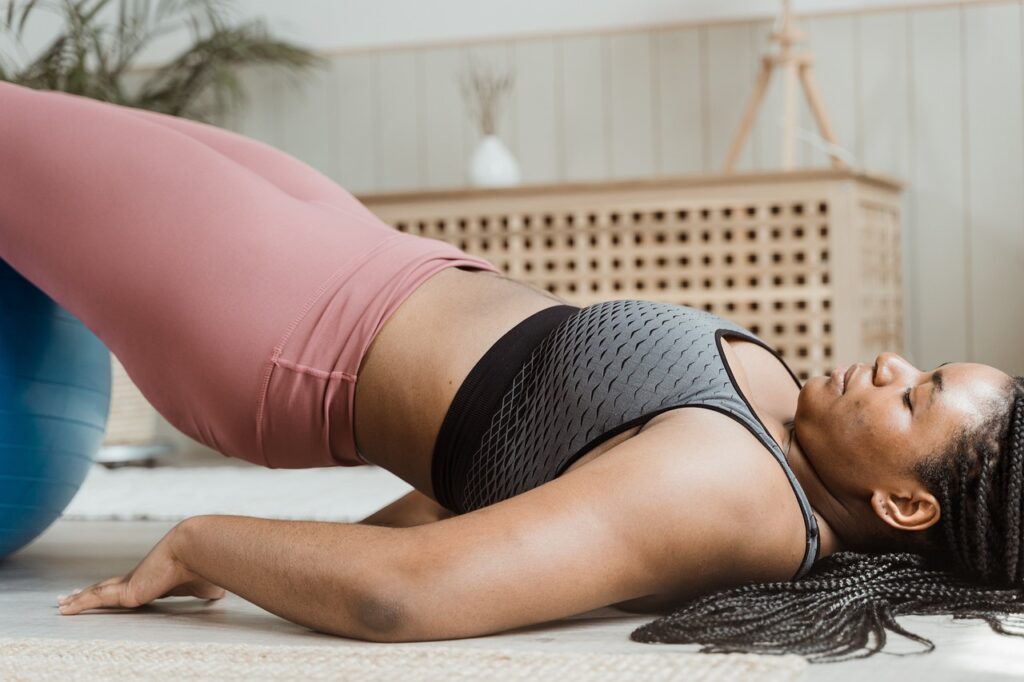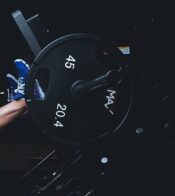Bodyweight Workouts at Home: Effective Fitness Without Equipment

With the rise of home fitness and the increased focus on flexibility in workout routines, bodyweight workouts have become a popular and effective way to stay fit, build strength, and improve endurance without needing any equipment. Whether you’re a seasoned athlete or a beginner looking to start a fitness journey, bodyweight exercises are versatile, scalable, and can be done anywhere with minimal space. Best of all, they use nothing but your own body as resistance, making them accessible and easy to modify.
In this article, we’ll explore the benefits of bodyweight workouts, outline a comprehensive routine that targets all major muscle groups, and provide tips to get the most out of your at-home fitness regimen.
The Benefits of Bodyweight Workouts
Before diving into specific exercises, let’s first consider why bodyweight workouts are so effective and why they should be a part of your fitness routine.
1. Convenience and Accessibility
One of the biggest advantages of bodyweight exercises is that they require no equipment, meaning you can do them anytime, anywhere. Whether you’re traveling, at home, or short on time, you can fit in a quick and effective workout with no need for a gym membership or bulky equipment.
2. Builds Functional Strength
Bodyweight exercises are inherently functional, meaning they mimic real-life movements and engage multiple muscle groups at once. This helps improve not only your strength but also balance, coordination, and mobility. Exercises like squats, lunges, and push-ups train your body to move efficiently in everyday activities, reducing the risk of injury.
3. Scalability and Versatility
Bodyweight exercises can easily be modified to match any fitness level. If you’re a beginner, you can start with easier variations and progress to more challenging movements as you get stronger. For example, starting with knee push-ups and advancing to regular or plyometric push-ups. This makes bodyweight workouts an excellent choice for people at all stages of their fitness journey.
4. Improves Cardiovascular Health and Endurance
Many bodyweight exercises, like burpees, mountain climbers, and jumping jacks, elevate your heart rate, offering cardiovascular benefits along with strength training. Incorporating these exercises into a routine helps improve your endurance, burn calories, and boost overall fitness.
5. Boosts Flexibility and Mobility
Bodyweight workouts often involve large, dynamic movements that increase your range of motion and promote flexibility. Exercises like lunges, planks, and yoga-inspired poses help improve joint health, muscle flexibility, and overall mobility, which are crucial for injury prevention and long-term fitness.
The Ultimate At-Home Bodyweight Workout Routine
This workout is designed to target all major muscle groups and provides a mix of strength, cardio, and flexibility training. Depending on your fitness level, you can adjust the number of sets, reps, or rest time to suit your needs.
Warm-Up (5-10 minutes)
A proper warm-up is essential to get your muscles ready and prevent injury. You can start with some light cardio to increase your heart rate and get the blood flowing to your muscles. Here are some dynamic moves to kickstart your workout:
- Jumping Jacks – 1 minute
- Arm Circles – 30 seconds in each direction
- High Knees – 1 minute
- Hip Circles – 30 seconds in each direction
Circuit 1: Lower Body
1. Bodyweight Squats
Bodyweight squats are one of the best exercises for building strength in your legs, glutes, and core.
- How to do it: Stand with your feet shoulder-width apart. Lower your body by bending your knees and hips as if sitting back into a chair. Keep your chest up and your knees tracking over your toes. Push through your heels to return to the starting position.
- Reps: 15-20 reps
- Tip: To make this more challenging, try holding a pause at the bottom or performing jump squats.
2. Lunges
Lunges are excellent for targeting your quads, hamstrings, and glutes, while also improving balance.
- How to do it: Step forward with your right leg and lower your body until both knees are bent at a 90-degree angle. Push back up to the starting position and switch legs.
- Reps: 12-15 reps per leg
- Tip: For an added challenge, try reverse lunges or walking lunges.
3. Glute Bridges
This exercise primarily works your glutes and hamstrings while engaging your core.
- How to do it: Lie on your back with your knees bent and feet flat on the floor. Push through your heels to lift your hips toward the ceiling while squeezing your glutes at the top. Lower your hips back down.
- Reps: 15-20 reps
- Tip: To increase difficulty, try single-leg glute bridges.
Circuit 2: Upper Body
1. Push-Ups
Push-ups are a classic bodyweight exercise that targets your chest, shoulders, triceps, and core.
- How to do it: Start in a plank position with your hands slightly wider than shoulder-width apart. Lower your body until your chest is close to the floor, then push back up to the starting position.
- Reps: 10-15 reps
- Tip: Beginners can start with knee push-ups, while advanced individuals can try decline push-ups or clap push-ups.
2. Plank to Push-Up
This dynamic movement targets your core, shoulders, and arms while also engaging your stabilizer muscles.
- How to do it: Start in a forearm plank position. One hand at a time, push yourself up into a full plank (push-up position) and then return to the forearm plank.
- Reps: 10-12 reps
- Tip: Keep your core engaged and try not to let your hips sway too much.
3. Tricep Dips
Tricep dips work the muscles in the back of your arms and can be done using a chair or bench.
- How to do it: Sit on the edge of a chair or bench with your hands next to your hips. Slide your hips off the edge and lower your body by bending your elbows to 90 degrees. Push back up.
- Reps: 12-15 reps
- Tip: To increase difficulty, extend your legs further away from your body or place your feet on an elevated surface.
Circuit 3: Core
1. Plank
The plank is one of the best exercises for building core strength and stability.
- How to do it: Start in a forearm plank position, with your elbows directly under your shoulders and your body in a straight line. Hold the position, keeping your core tight and avoiding any sagging in the lower back.
- Hold Time: 30-60 seconds
- Tip: To make this harder, try a plank with leg lifts or a side plank variation.
2. Bicycle Crunches
Bicycle crunches engage both the upper and lower abs, as well as the obliques.
- How to do it: Lie on your back with your hands behind your head. Lift your shoulders off the floor and bring one knee toward your chest while rotating your opposite elbow to meet the knee. Switch sides in a pedaling motion.
- Reps: 15-20 reps per side
- Tip: Focus on slow and controlled movements to fully engage your core.
3. Mountain Climbers
Mountain climbers are a full-body, dynamic exercise that targets your core while getting your heart rate up.
- How to do it: Start in a high plank position. Bring one knee toward your chest, then quickly switch legs as if you’re running in place.
- Reps: 30-40 reps (15-20 per leg)
- Tip: Increase speed for a cardio burst, or slow it down to focus on core engagement.
Finisher: Cardio Burst
End your workout with a quick burst of cardio to burn extra calories and improve cardiovascular health. Choose one or more of the following exercises and perform them for 30-60 seconds each.
- Burpees: A full-body movement that combines a squat, push-up, and jump.
- Jumping Jacks: A simple but effective cardio exercise to keep your heart rate up.
- High Knees: A running-in-place move that engages your core and improves speed.
Cool Down and Stretch (5-10 minutes)
After your workout, take some time to cool down and stretch your muscles. Focus on stretches that target the muscles you just worked, such as:
- Hamstring Stretch
- Quad Stretch
- Shoulder Stretch
- Child’s Pose
Stretching helps improve flexibility, reduce muscle soreness, and enhance recovery.
Tips for Getting the Most Out of Bodyweight Workouts
1. Focus on Form
Proper form is essential for maximizing the effectiveness of bodyweight exercises and avoiding injury. Always ensure you’re performing each movement with the correct posture and technique.
2. Increase Intensity
As you get stronger, you can increase the intensity of your workouts by adding more reps, performing exercises faster (with good form), or trying more advanced variations of each movement. For example, you can move from regular push-ups to decline push-ups or from standard lunges to jumping lunges.
3. Use Time Under Tension
If you find bodyweight exercises too easy, try slowing down
